#Gomphidae
Text
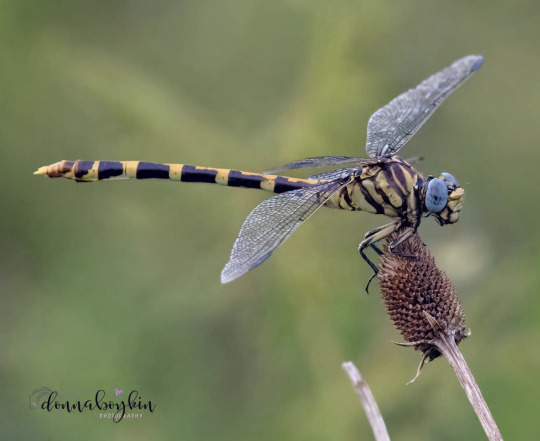
Four-striped Leaftail (Phyllogomphoides stigmatus), female, family Gomphidae, Lamar county, TX, USA
Photograph by Donna Boykin
#leaftail#dragonfly#phyllogomphoides#Gomphidae#odonata#insect#entomology#nature#animals#north america
249 notes
·
View notes
Text
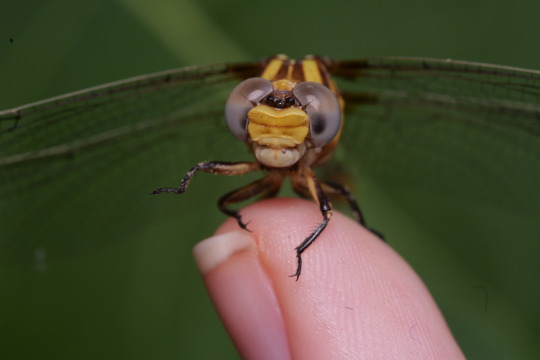
Eastern Ringtail (Erpetogomphus designatus)
185 notes
·
View notes
Text
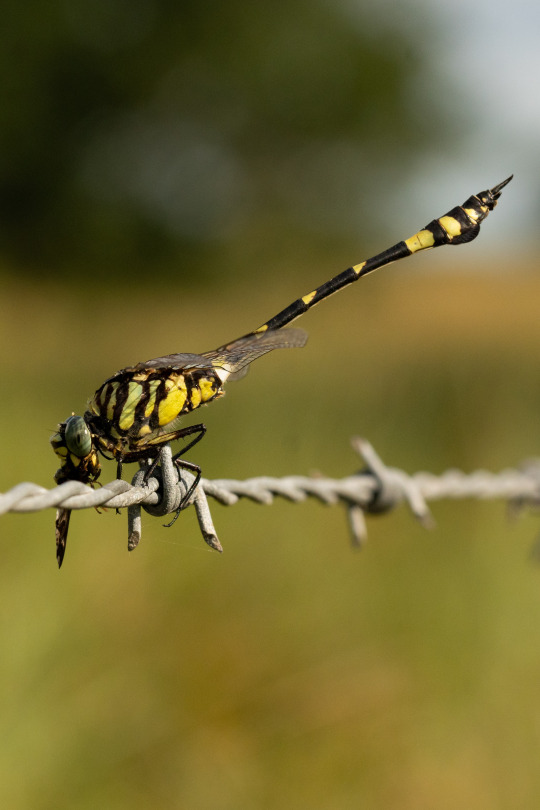
an Australian Tiger dragonfly, eating what looks to be a Tangleveined fly :')
Australian Tiger (Ictinogomphus australis).
#ljsbugblog#bugblr#entomology#macro#insects#odonata#dragonflies#gomphidae#clubtails#ictinogomphus#tigertails#ictinogomphus australis#australian tiger
25 notes
·
View notes
Text

Club-tailed Dragonfly, Gomphus vulgatissimus. Canon 400D EF 00 2.8 f/3.5 1/200 iso: 800 Srbsko, Czech Republic 5/22/2010
#Gomphidae#Gomphus#Clubtail#Odonata#Dragonflies#damselflies#insects#invertebrates#macro#Wetlands#insectphotography#macrophotography#insect#canon#grasslands
7 notes
·
View notes
Text
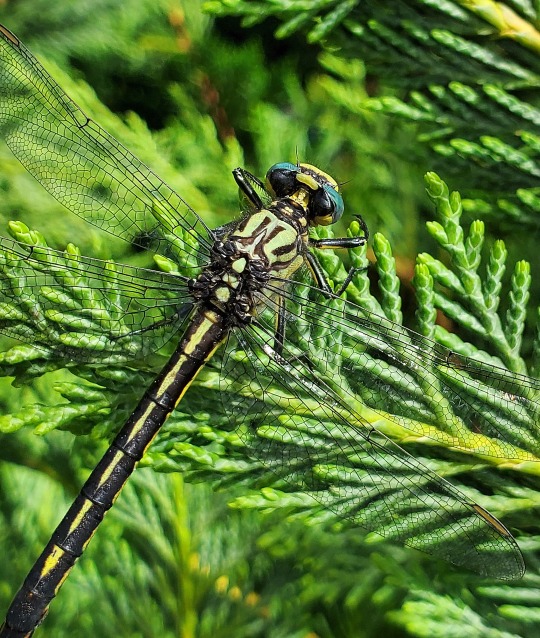
Bug of the Day
This is a really cool dragonfly, a pond clubtail (either Arigomphus villosipes or A. furcifer, still waiting to hear for sure).
150 notes
·
View notes
Text
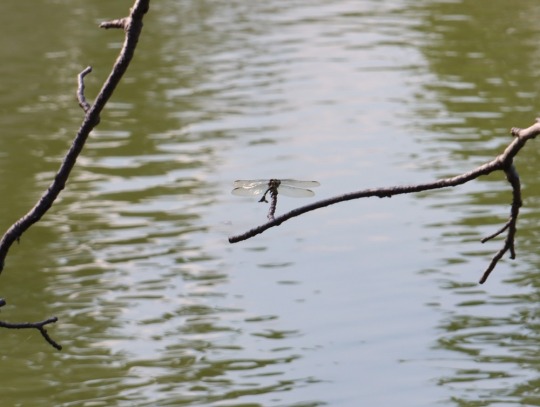
お堀にいたウチワヤンマ(9月29日)
golden flangetail (Sinictinogomphus clavatus)
gatunek ważki z rodziny gadziogłówkowatych (Gomphidae)
#dragonfly#golden flangetail#Sinictinogomphus clavatus#ważka#gadziogłówkowate#Gomphidae#insects#owady#bugs#japan#water surface#woda
1 note
·
View note
Text
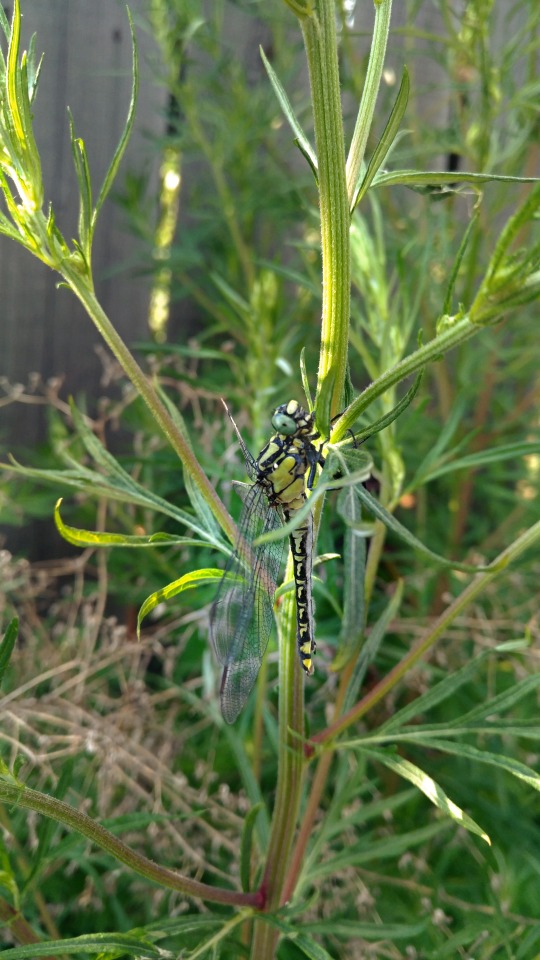
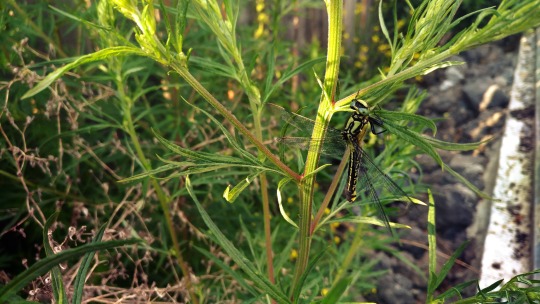
Дедка европейский или дедка хвостатый (лат. Onychogomphus forcipatus) — вид разнокрылых стрекоз из семейства дедок (Gomphidae).
Dragonfly Onychogomphus forcipatus.
#русский tumblr#россия#июль 2023#лето#природа#загородом#зелень#трава#стрекоза#макрофото#мои фото#russia#summer#july#nature#outdoors#greenery#grass#dragonfly#nature photography#beauty of nature#my photos#original photography#photographers on tumblr#macrophotography
74 notes
·
View notes
Photo
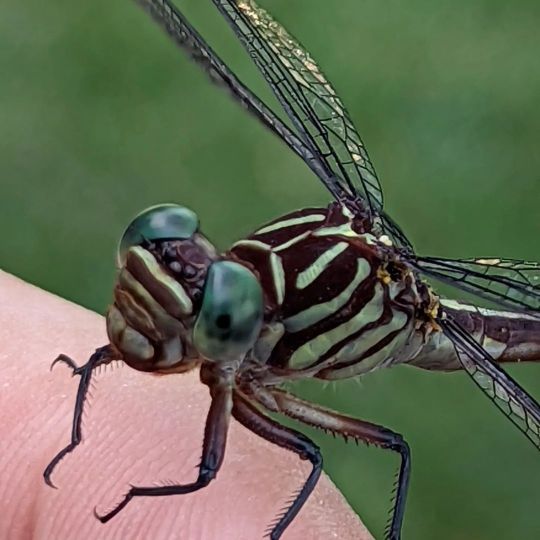
Stylurus plagiatus, the russet-tipped clubtail, is a species of clubtail in the family of dragonflies known as Gomphidae. It is found in Central America and North America. (at Arlington, Virginia) https://www.instagram.com/p/Cg-F62bpsSPzmTNsNz7UXiaqwlTmYZq8kXXHsE0/?igshid=NGJjMDIxMWI=
0 notes
Text
Dragonflies in the clubtail family (Gomphidae), such as spinylegs and the dragonhunter, typically breed in streams and other clean, well-oxygenated bodies of water. Their nymphs most often bury themselves in sand or mud, so if there is insufficient oxygen penetrating the substrate they’ll have difficulty breathing.
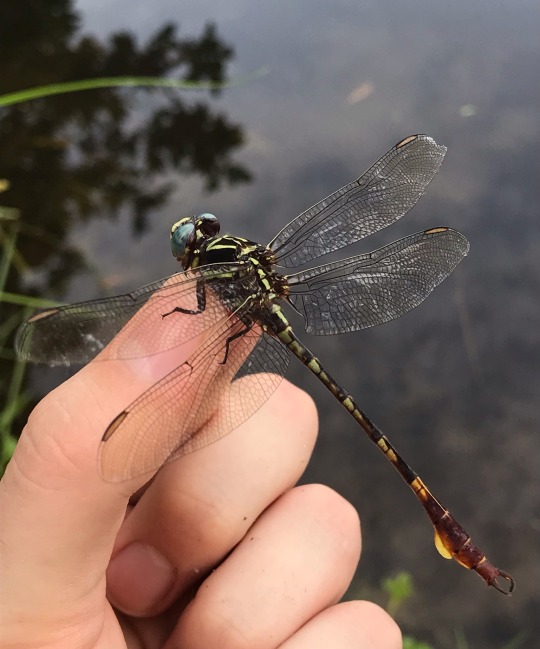
In peninsular Florida, the cool, oxygenated aquatic habitats that most gomphid nymphs require are rare, so there is less gomphid diversity compared to more northern areas. One of the most common gomphids that does occur is the two-striped forceptail (Aphylla williamsoni), which utilizes stagnant bodies of water with muddy bottoms. Its nymphs have a long, snorkel-like extension on their abdomen that allows them to breathe while buried in the anoxic layers of mud.
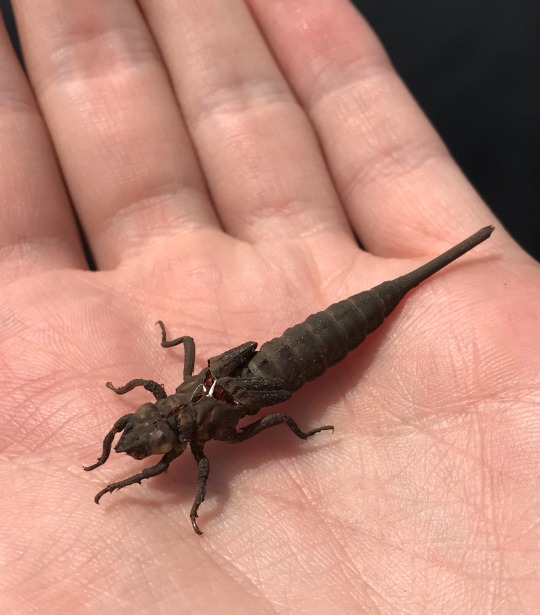
386 notes
·
View notes
Text
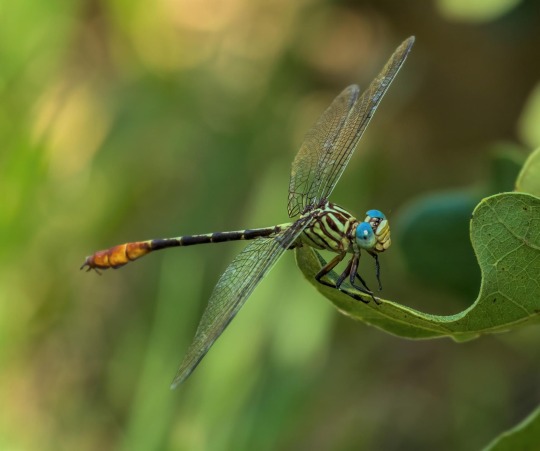
Russet-tipped Clubtail (Stylurus plagiatus), male, family Gomphidae, Jackson county, TX, USA
Photograph by Roy Freese
217 notes
·
View notes
Photo
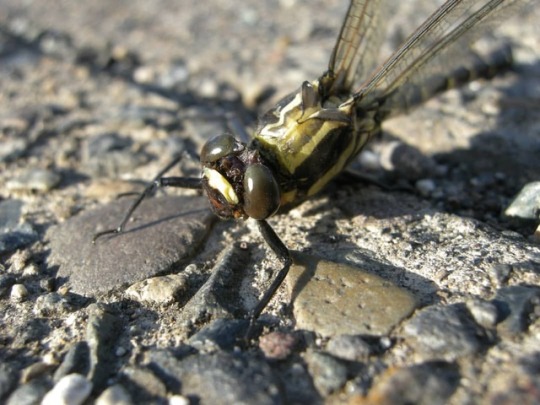
_Sieboldius albardae_ #Gomphidae #darningneedle #mosquitohawk #spindle #earsewer #Libelle #コオニヤンマ 複眼が離れているのでサナエトンボ科のコオニヤンマだろう。 (郵便局) https://www.instagram.com/p/ByE_MXBgSRU/?igshid=1srj4fyx67zlk
0 notes
Photo
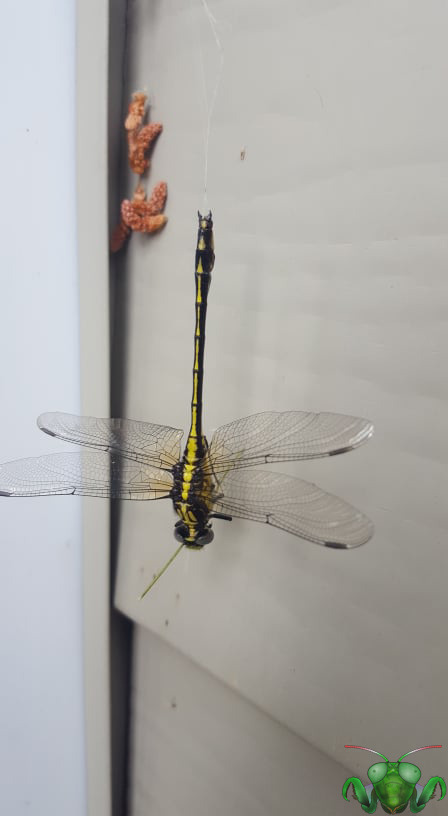
Black-Shouldered Spinyleg - Dromogomphus spinosus
To conclude the showcase (for now) of the majestic sky-hunters known as Odonata we have one final, special specimen, fresh from a cottage visit in Muskoka. I couldn’t go unfortunately, but one of dearest friends is on the lookout for some of those cottage insects that patrol the water. Last year he was gracious enough to contribute some amazing Moth findings! I deeply appreciate those, and this new addition to the many Dragonflies of Toronto. As we enter July and the height of summer, these beautiful insects emerge to patrol the skies, jetting to and capturing flying insects on their hunt. Hard to believe that something so talented at flight could spend most of its time in the water (as a naiad) swimming around. Cottage country certainly is a great place to find Dragonflies in that case. The predatory young can swim to their heart’s content in the lakes and feast on creatures such as Mosquito larvae. There’s plenty of open space to fly around in adulthood, and the process repeats itself. This individual doesn’t appear to have it so lucky as it appears to have expired, and possibly have been tangled up in silk. I’m not sure, all I have is the picture to go on, and speaking of which, I should probably dive into what makes this Dragonfly so different.
This type of Dragonfly isn’t a Skimmer or even a Darner despite its large size and broad wings. It may not look it, but this bright-yellow hunter is something called a Clubtail Dragonfly - of the family Gomphidae! While this specie doesn’t show off the pronounced feature, other species have an abdomen that widens out towards the end resembling a tail club, just like the armored anklyosaurid dinosaurs. Some have no club, others a small club and some are fairly broad. It likely isn’t used for a defensive weapon, but it still gives these Odonates something distinguishable to an observer. If you can’t see a clubbed tail, you can tell these insects apart from other Dragonflies by looking at their eyes. Notice how they are separated from each other, compared to the others which meet in the middle? I wonder is this alteration has changed their range of vision and thus their habits like hunting and perching? To identify a Clubtail, you’ll need to look closely at the body pattern and find the right match. This goes for the thorax pattern all around and the abdominal patterns too. Since a lot of them that call Ontario home are yellow, finding the match for this one was very tricky. So very tricky. Fortunately, the tail pattern sealed the deal in conjunction with the “I” shaped pattern on the thorax. Trying get pictures all around their body if you can* (you may need a net to catch them, be gentle), especially at the end of the tail. The end of the tail will help you determine the gender of your Dragonfly. Claspers like that seem to indicate that is individual was male, but you can never be too sure from just one picture.
*Note: Angle of picture hides the spiny legs of this Dragonfly. Refer to others for similarly defined legs. Apparently this Spinyleg has long and short spikes on their legs for restraining prey. Fascinating!
Picture was taken on July 1, 2021 in Muskoka with a Samsung Galaxy 6 Edge
#jonny’s insect catalogue#insect#dragonfly#black shouldered spinyleg#clubtail dragonfly#odonata#muskoka#july2021#2021#ontario insect#entomology#nature#invertebrates
1 note
·
View note
Text
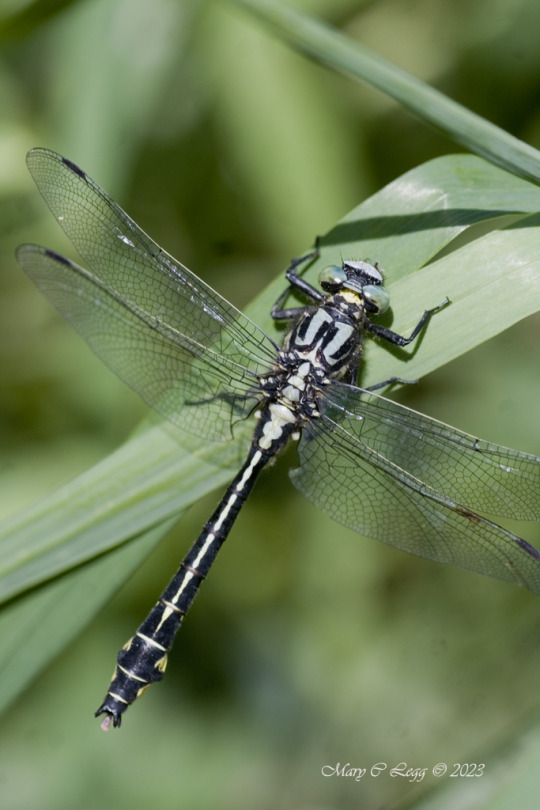
Club-tailed Dragonfly, Gomphus vulgatissimus Canon 400D EF 100 2.8 f/4.0 1/400 iso: 200 Srbsko, CZE May 25, 2012
#Gomphidae#Clubtails#Odonata#dragonflies#insects#invertebrates#macro#insect#canon#insectphotography#macrophotography
3 notes
·
View notes
Text
ALGONQUIN OBSERVATIONS (DAY FOUR)
Thursday was another bright and sunny day in Algonquin Provincial Park. We set off for an easy trail in the morning, accompanied by some good friends. Even in the parking lot for the trail, I spotted some wildlife, though of a dubious sort. Two of the most notorious insects were resting on our car, representing two very different versions of what a biting fly can be.
A mosquito (Family Culicidae):
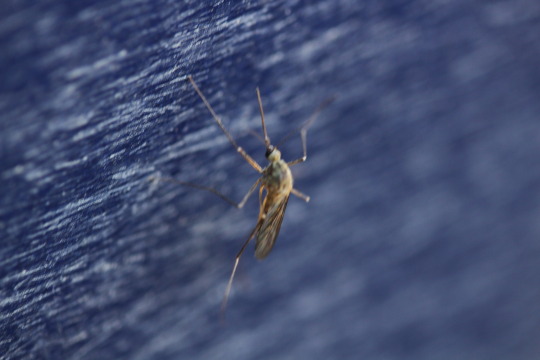
A Deer Fly (Genus Chrysops):
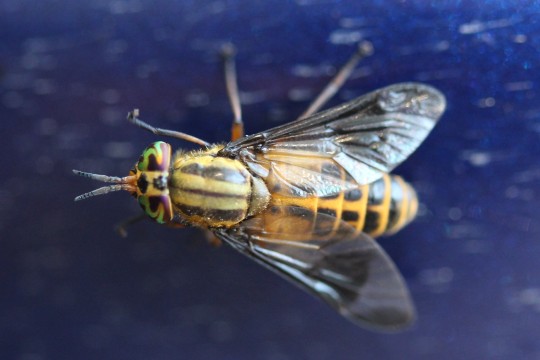
The mosquito has a delicate, fragile beauty (though some would say not fragile enough), with its long thin legs and needle-like mouthparts. The deer fly has a robust and colorful body, with marvelously patterned eyes. Just as they differ in body form, they differ in their methods of acquiring that nutritious resource: mammalian blood. With proportionately huge eyes, the deer fly clearly relies on sight to navigate its world. It’s for this reason that insect repellent generally works better against mosquitoes, which use smell and are thus deterred from the chemicals in repellent. The visually oriented deer flies have no problem finding a chemically masked target. Once on a victim’s exposed skin, the mosquito uses its piercing mouthparts to directly draw blood from a vessel. During this time, it also injects its saliva which ensures the blood flows and it is the foreign saliva that causes the swelling and itching reaction of a mosquito’s bite. The deer fly has a much less elegant method to reach the blood of a victim, which is nonetheless effective. It simply slices into the skin, causing bleeding and laps up the blood, all in a few seconds. The bite of the mosquito is usually noticed after the mosquito has already left, or is just finishing its meal, while the bite of a deer fly is noticed immediately, with the sharp pain that comes from its lacerating mouthparts.
These flies are certainly pests, and can make the outdoors less appealing to many people, but they are also quite intricate when viewed up close, and are yet one more component of the ecosystems of Algonquin Park and the world.
On the logging museum trail, we encountered yet another biting fly, the deer fly’s larger cousin, the horse fly.
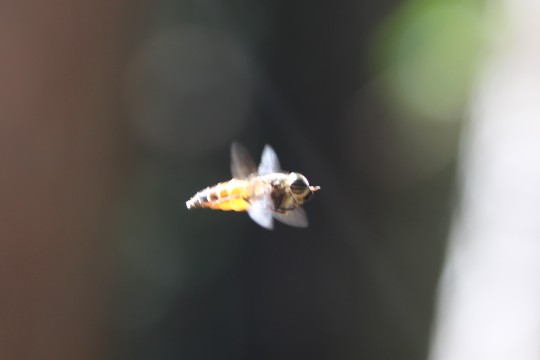
Like the deer fly, the eyes of horseflies are huge and beautifully patterned, as this Hybomitra that I spotted hovering in the path demonstrates.
The horseflies seemed to be stationary in the air, but to do so they must have been constantly adjusting their position, scanning the environment with their huge eyes. These hovering flies were possibly males staking out aerial territories and awaiting the arrival of female mates.

This is a picture of me taking a picture of a hovering Hybomitra horsefly. Photo credit goes to Stephen Faulkner (goodforcanada).
Other flying insects that abounded on the Logging Museum trail were dragonflies and damselflies (Order Odonata) of various colours that shone in the sunlight. One particular damselfly stood out because it was not a bright colour, but rather a drab steel-grey.
Here are some of the dragonflies and damselflies observed on the trail (credit for many of these identifications go to the iNaturalist community [inaturalist.org]):
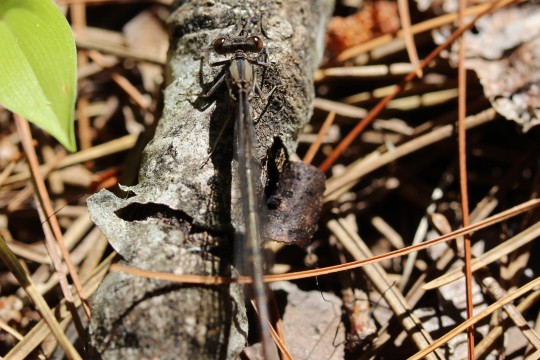
A surprisingly dull-coloured Argia damselfly.

Frosted Whiteface (Leucorrhinia frigida).

Another Whiteface (Leucorrhinia), facing the camera.
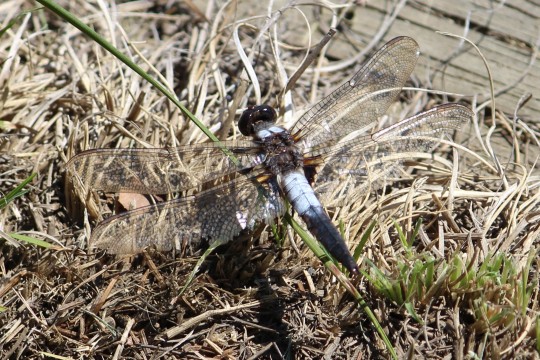
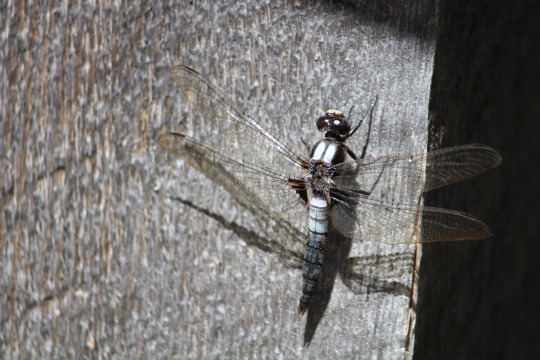
Chalk-Fronted Corporal (Ladona julia)
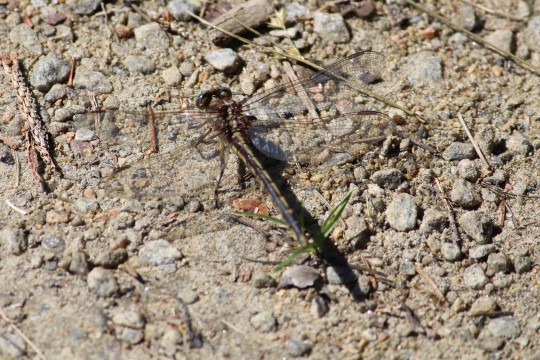
Phanogomphus, a Dragonfly in the Clubtail family (Gomphidae).
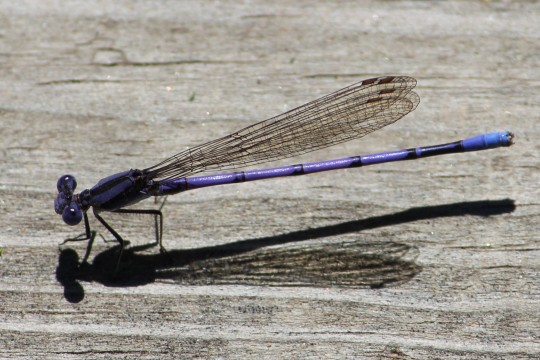
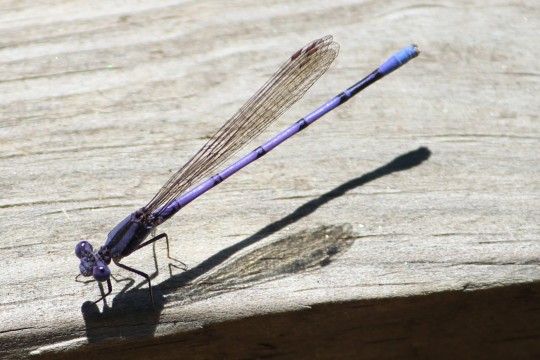
Vibrantly purple Violet Dancers (Argia fumipennis, subspecies violacea).
The reason these insects were so abundant in this habitat was because the trail passed through marshy aquatic terrain. Young dragonflies and damselflies grow up within the water, spending their larval lives as underwater predators.
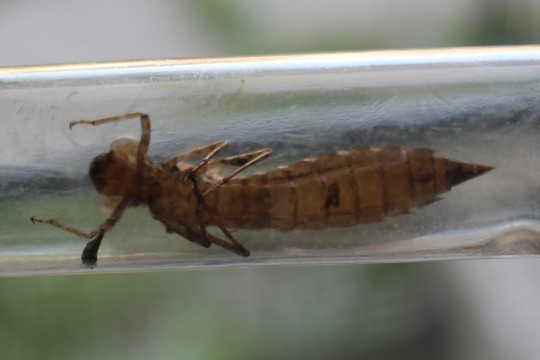
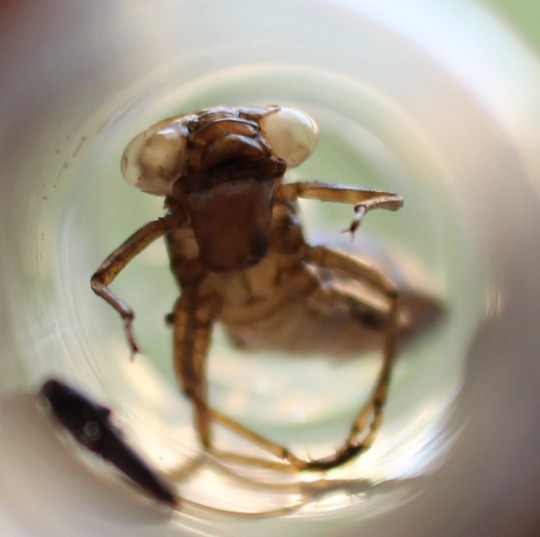
These pictures are of a dragonfly larval exoskeleton, shed upon leaving the water and larval life behind. I found this particular shed skin two years ago on a different trail in Algonquin Park (Bat Lake).
After returning to our site, we received an avian visitor: a Black-backed woodpecker (Picoides arcticus), drilling into the bark of a nearby tree.
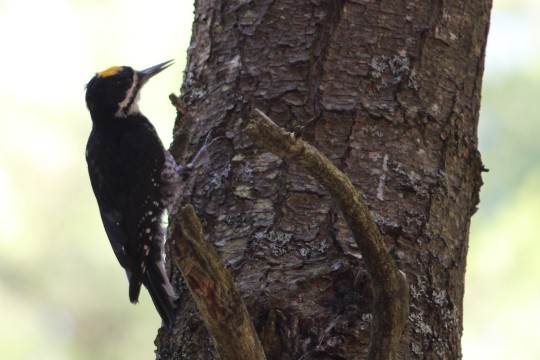
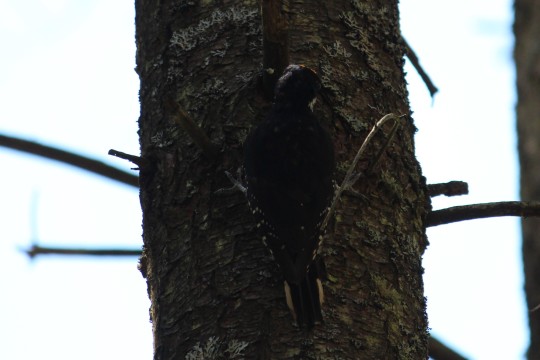
The bird braced itself each time with its sharp hooked claws, and jabbed forward with its beak into the outer layer of the tree. Woodpeckers have extremely long tongues that are covered with tiny hooks that they use to extract insects that live beneath the tree’s ‘skin’ for their food. I wondered what creatures the bird was snacking on, and marveled at its precarious-looking grip on the bark, as it hammered away. Just as suddenly as it appeared, it left, traveling through the air to another tree further away, where it would find more food and continue its afternoon feast. We were fortunate to have seen this beautiful avian hunter on its journey through the woods of Algonquin Park.
6 notes
·
View notes
Photo

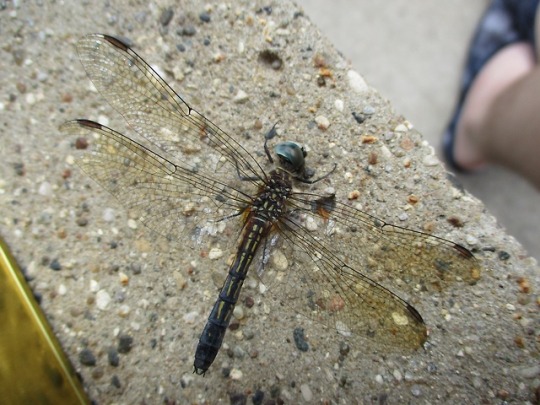
I went outside to take care of the recyclables and ended up making a new pal (who may or may not be dying and also has missing wing bits).
Given that xe lacked a name and I didn’t want to refer to xir by pronouns all the time, xe hath been dubbed Xiang. Apparently dragonflies eat small bugs like mosquitos and gnats?? So I’ll see what I can do. Not entirely sure what type of dragonfly Xiang is, but xe looks a lot like a gomphidae to me.
5 notes
·
View notes
Text
Black- shouldered spinyleg (Dromogomphus spinosus)
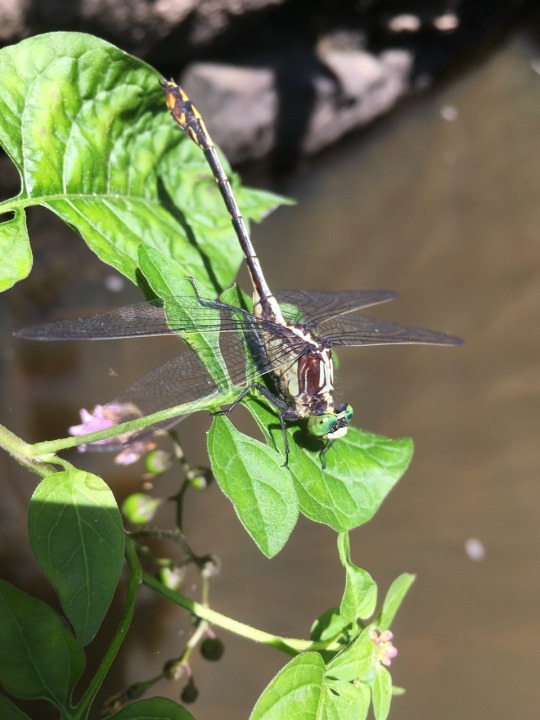
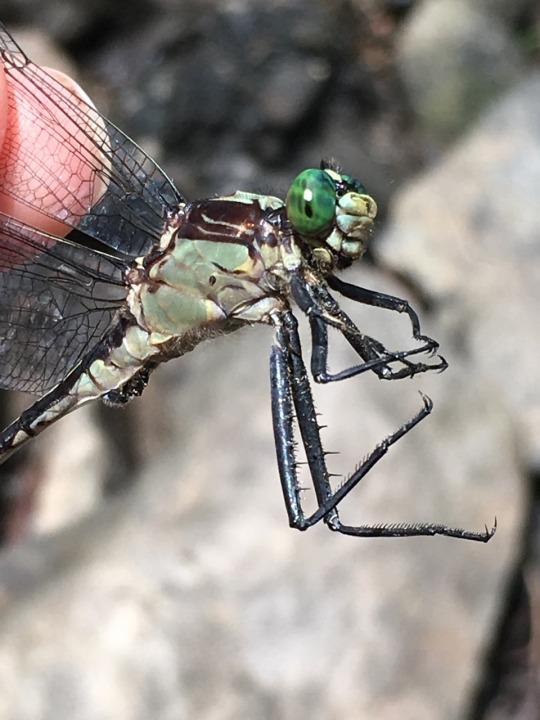
this stream- dwelling gomphid is easily recognized by its, uh, black shoulders and spiny legs
190 notes
·
View notes